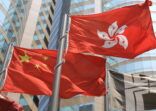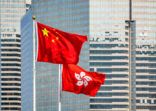The scheme would allow mainland investors to trade ETFs listed on the Hong Kong Exchange and Hong Kong investors to trade those listed in Shanghai and Shenzhen. It would add to the existing cross-border trading links: Stock Connect, Bond Connect and the Mutual Recognition of Funds (MRF).
While the implementation of the ETF Connect can in principle follow the framework of either Stock Connect or the MRF, the industry’s preference is the former, according to Wong, who spoke during a panel discussion held by the HKIFA on Wednesday.
“The association has suggested that the ETF Connect should be designed similarly to the Stock Connect model,” she said. “The MRF style might constrain asset managers in participating in the scheme.
Requirements such as size of fund and investor composition [limitations on investor purchases from each jurisdiction] would create difficulties in fund registration and participation,” she added.
By comparison, the Stock Connect does not impose limitations on purchases of stocks based on investor jurisdiction, but trading is subject to a daily quota. In order for ETF Connect to be successful, its trading quota should be separate from the aggregated quota for the Shanghai and Shenzhen Stock Connect, Wong said.
The planning of ETF Connect has been underway as a part of the Mutual Market project of the Hong Kong bourse since 2016. The exchanges in Hong Kong, Shanghai and Shenzhen had expected to launch the scheme by the end of 2017, but regulatory and technical issues have delayed the original plan.
One major hindrance has been the requirement of the mainland’s primary regulator to access the identities of investors who use the existing connect schemes. It sees identification of investors as a prerequisite to implementing ETF Connect.
The preliminary framework of the identity disclosure to the mainland’s regulator is ready and its implementation is expected in the first half of 2018, according to Wong.
Liquidity boost
ETF Connect has potential to inject liquidity from the mainland into Hong Kong-domiciled ETFs because Chinese investors would see it as means of diversification, according to Cindy Chen, country head of Hong Kong securities services at Citi, a panelist.
“For [mainland] investors, the major attraction of the ETF Connect between Hong Kong and the mainland is the products that provide global diversification,” Chen said. “It could be investing in Asia ex-Japan, or even the S&P 500.”
“Take the northbound MRF [Hong Kong-domiciled funds available for sale in the mainland] as an example,” she continued. “The most successful fund is a pan-Asian fund with a broad-based strategy.”
The potential to tap into mainland investors’ demand for diversification would encourage more ETF issuers to list their products in Hong Kong, Chen noted. Today, many ETF issuers are not motivated to do so due to relatively low liquidity, she added.
Several issues still need to be addressed before ETF Connect is implemented. In particular the regulators need to optimise holiday trading arrangements and settlement schemes to make trading seamless for investors and the industry.
Education is also needed, especially on the mainland, as investors there are not familiar with complex ETF products, such as leveraged and inverse ETFs. Chen suggested that initially only plain vanilla-style products should be included in the scheme.

















